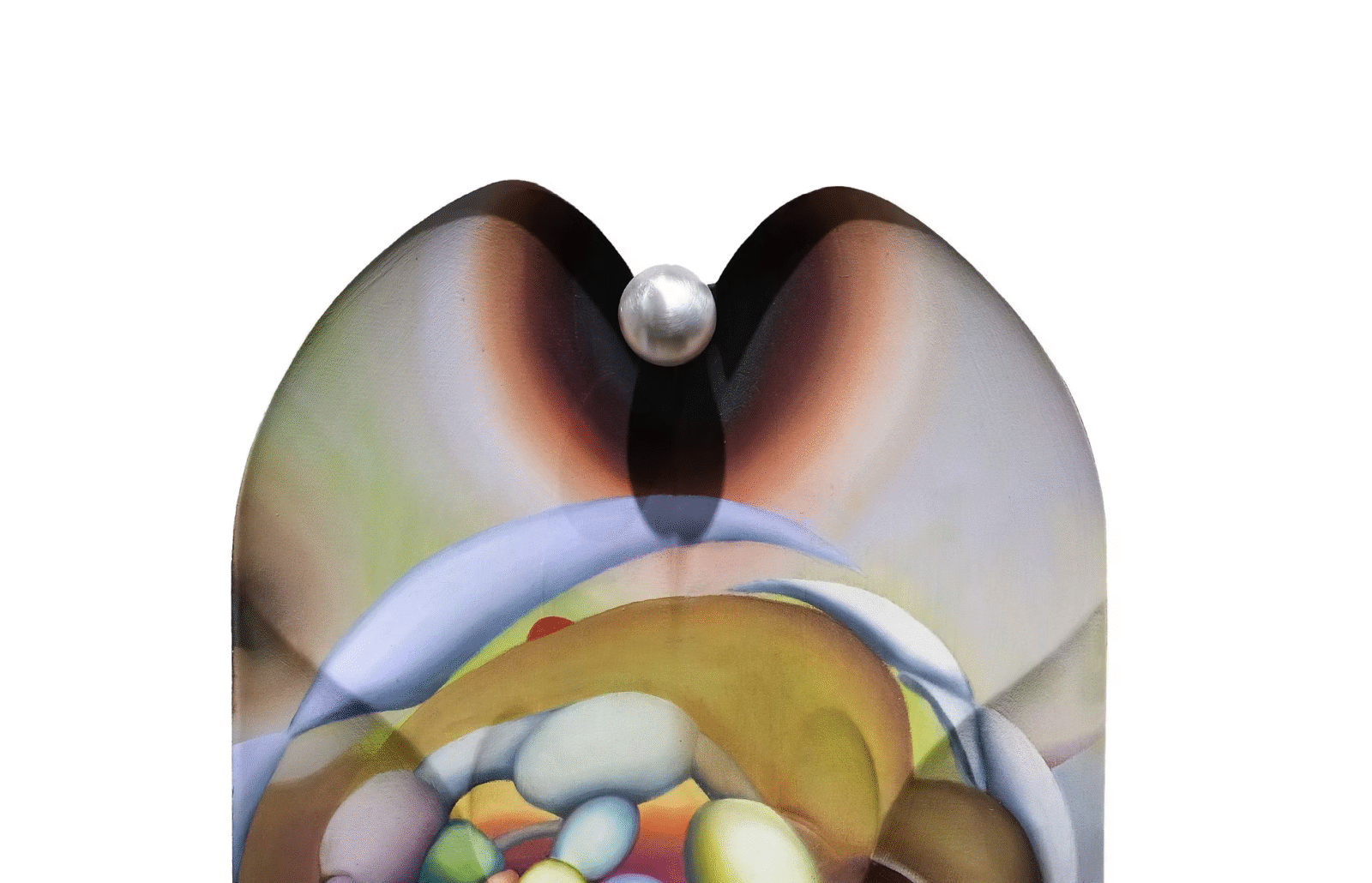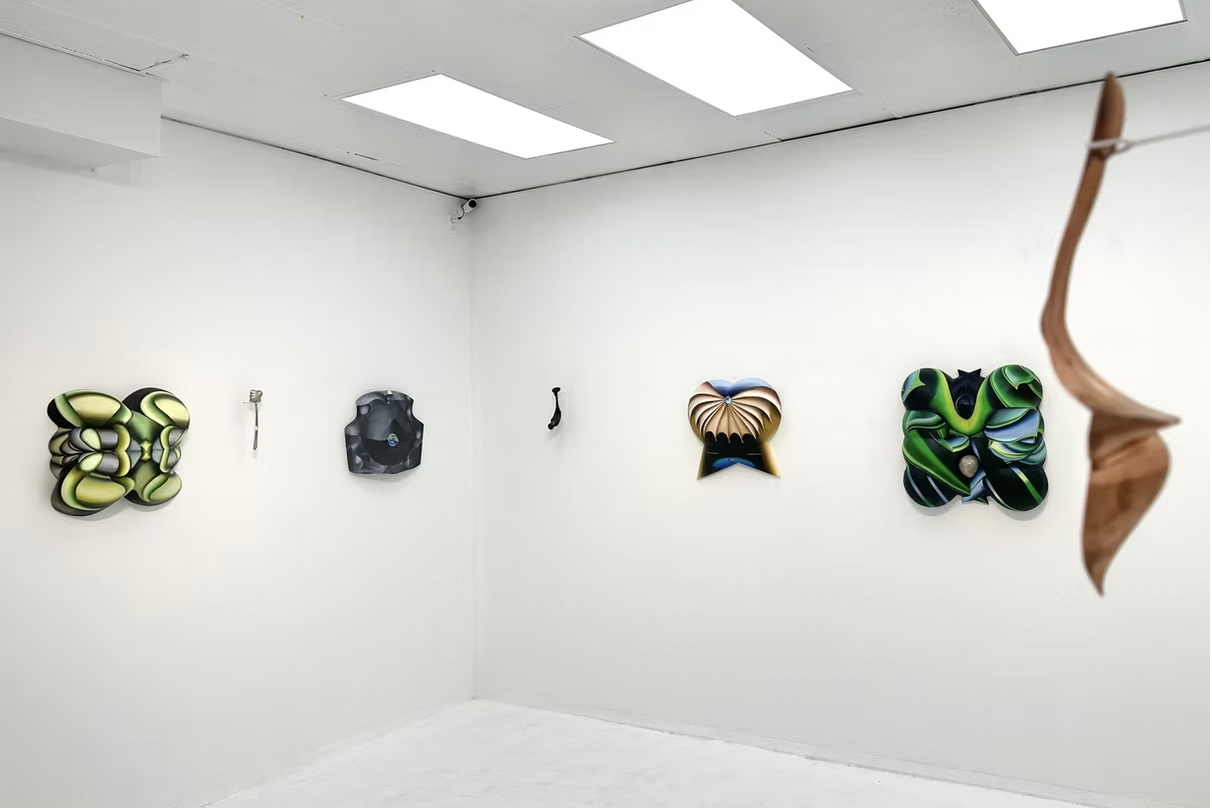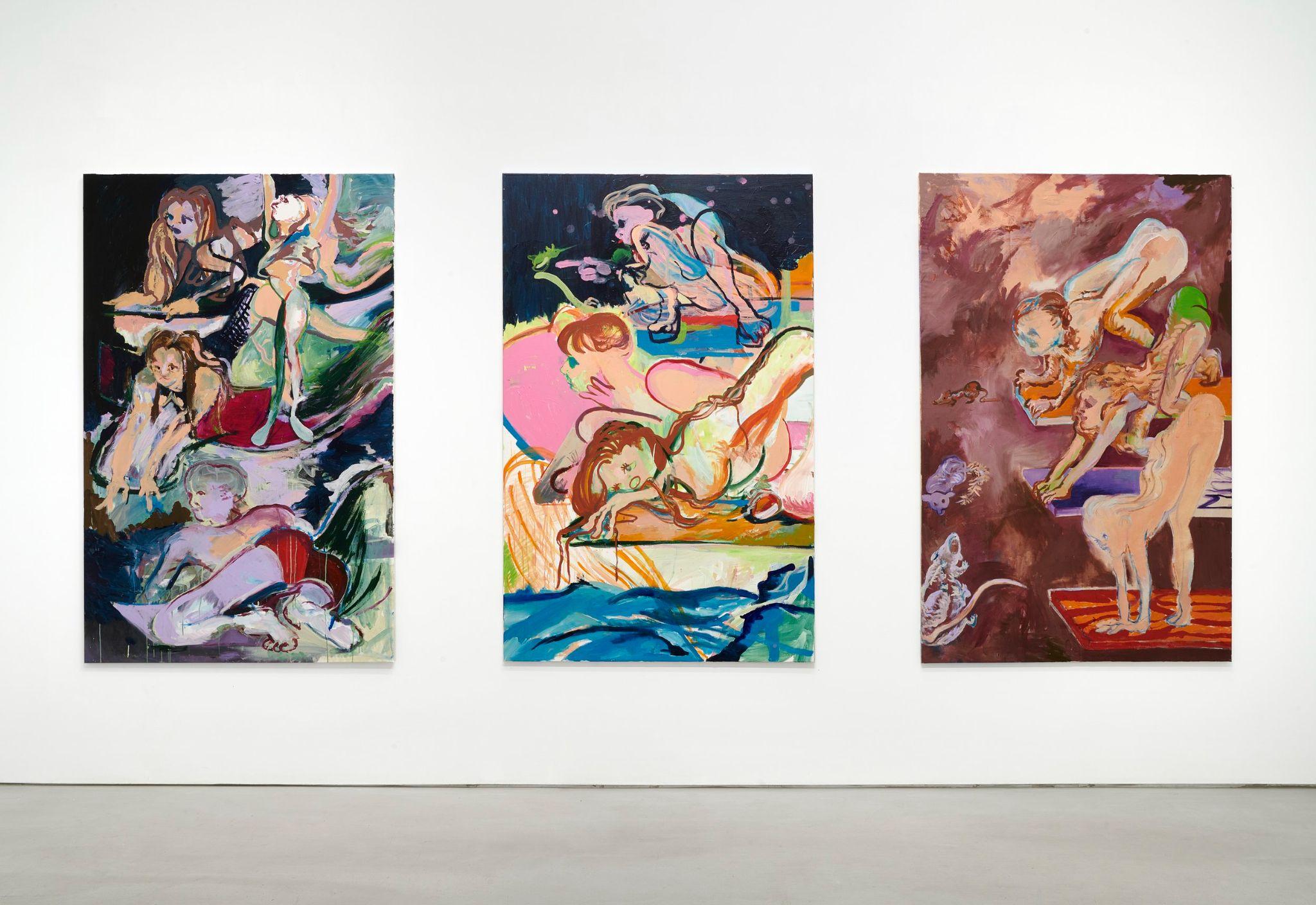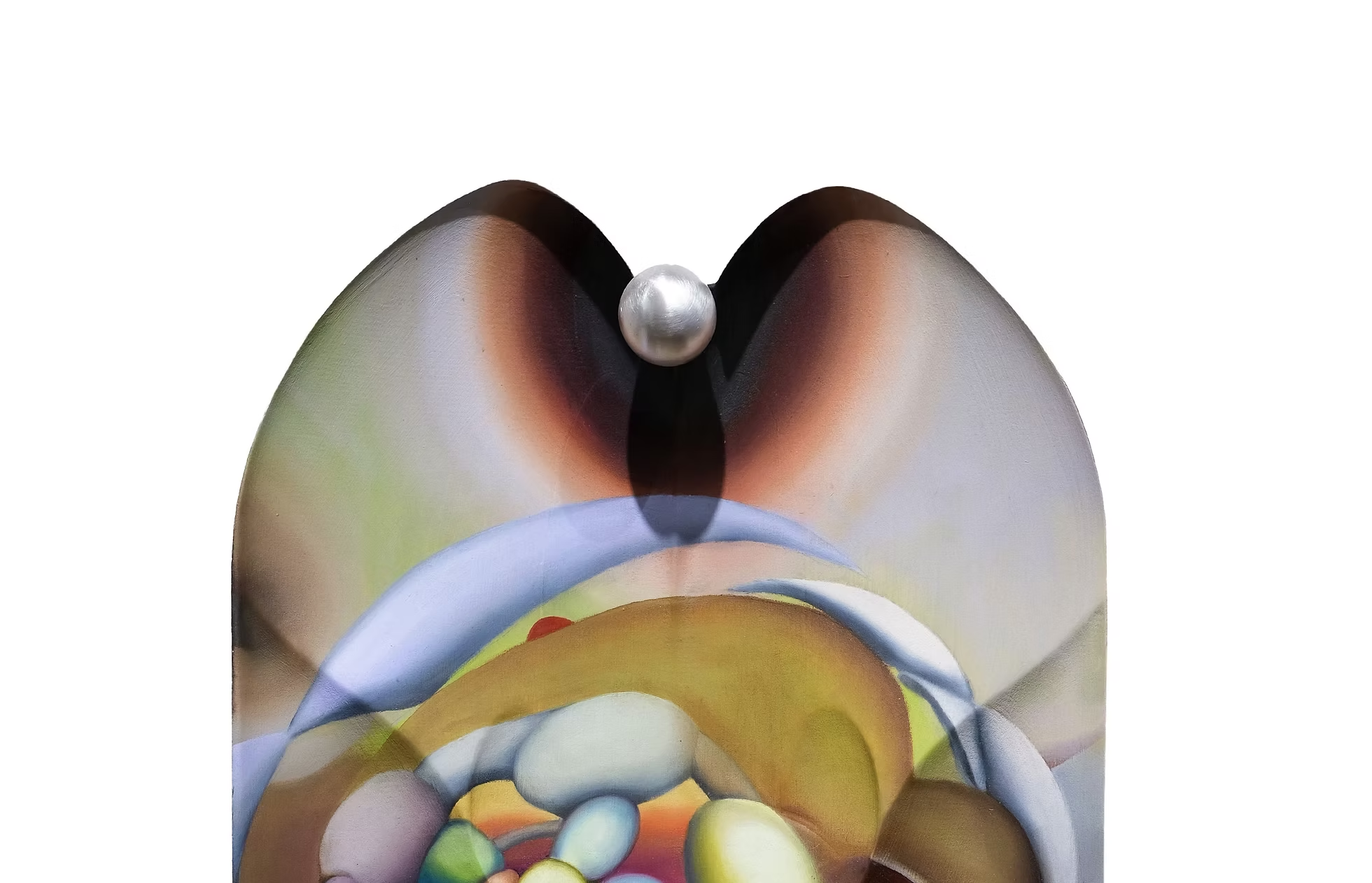A Masterful Engagement with Feminist and Decorative Art as Gin Lin Presents Jeweler Trained Artist at Space776


As light unfolds an ever-changing appearance of a stained glass window, or a gem, Emily Chen’s paintings appear to refract and shift, although they are static. They have a metallic or translucent quality about them, like pieces of jewelry. Their irregular shapes add to this crossing over of media; the fact that they are oil paintings on wood adds to their materiality and objecthood. The distinctions between decorative arts, craft, and fine art have been important to erase, as they have historically barred craft artists from fine art circles and “blocked the view” of scholars, as Glenn Adamson puts it, from fully engaging with the material intelligence of craft. Yet, the lines are also worth exploring, since artists trained in craft traditions often develop a deep technical intimacy with their materials, shaped by different aesthetic values than those found in fine art institutions. Chen is one of these artists, trained as a jeweler and in metalsmithing at Rhode Island School of Design. Her solo show, The Feeling is Mutual on view at Space776, is fine art at its best—technical mastery and aesthetic forms that blur the boundaries between disciplines, uncovering that the essence of expression is more important than categorization.
Spoon 1 through 5, each in a different material, white bronze, copper, and sterling silver, are curious and beautiful. Like the paintings, they seem to shapeshift. Spoon 4’s handle is topped by a bowl that most resembles a spoon, and on its other side it has a deep bowl with rivets, like a petal or a buttocks. Whereas Spoon 2 cannot be used at all, its end is wrapped. All of Chen’s pieces have this mind-bending, rather psychedelic lean to them, while they maintain integrity. Less humorous and more curious.

When I see that Gin Lin is responsible for the curation of this show, I am not surprised. In New York, she has come to be known for spotting this type of artistic talent: masterful and boundary-breaking, often in dialogue with historical precedents. Her curating is always deeply engaging and very well executed. In 2023, through the exhibition INTIMATE PLAY at Nunu Fine Art, Lin introduced the Hamburg-based Taiwanese artist Chiao-Han Chueh to the United States. Chueh’s large-scale, colorful figurative oil paintings bring the female body into view through a Fauvist aesthetic. Contorted, wild, and sometimes shapeshifting in between human and animal, Chueh’s women explore freedom and bodily autonomy. I recall the Swedish artist Sigrid Hjertén (1885-1948), who painted women dancing, spending time together, and with men, at the opera, beach, and in the mountains. Often laughing and caught in a moment, nearly moving. Free. Their colors are similar, bold, and vibrant: purples, blues, pinks, and reds. Chueh’s motifs are more overtly sexual, squarely contemporary. Lin is well-suited to curate this type of art; her keen eye has been expertly trained as she is a researcher at Christie’s Post War and Contemporary Art Department. Chueh’s work also borrows from Chinese ink and calligraphy traditions; there are historical precedents of the intersection between Fauvism and Chinese Calligraphy, like with the work of Matisse and Sanyu.
Also at Nunu Fine Art, Lin’s most recent exhibition continued to juxtapose historical and contemporary visual language in Guan-Hong Lu’s solo exhibition, who, as Lin writes, “by collaging nonsensical photojournalistic imagery with unrelated visual elements, captures ambiguous moments that feel simultaneously real yet disjointed.” Works like Ghost from the 18th Century and Routes in the Dream and Feigning Care and Happiness, Wealth and Longevity communicates with the audience through conceptual clashes. Lin curates artists from the Asian diaspora without being prescriptive or tokenizing, instead skillfully leading with their unique artistic expression. A feat for any curator.

In an interview, Chen explains that she created the installation at Space776 to resemble a table setting and cites Judy Chicago’s infamous feminist masterpiece The Dinner Party (1974-79), as an inspiration. The bulbous shapes in the wood panel paintings bear a resemblance to Chicago’s vegetal form plates, their color schemes, and a kind of 1970s design aesthetic. Chen also shows in more design and jewelry-oriented settings, such as the Helsinki Fashion Week, Queens Botanical Garden, and Brooklyn Metal Works during New York Design Week. Chicago does not shy away from design either, I am thinking specifically about when she collaborated with Maria Grazia Chiuri at Dior to create an iridescent Lady Dior bag and has continued to collaborate with the fashion house. The Feeling is Mutual certainly celebrates exploration. In Chen, the rising star curator Lin has found an artist, like Chicago, who is brave and skilled enough to break the rules of art history to bend the minds of her viewers, opening for new venues of expression.
Emily Chen. The Feeling is Mutual is on view through February 19, 2025, at Space776.
You Might Also Like
A Rare Collaboration, New York City Ballet’s Sara Mearns Dances Amidst Diana Orving’s Sweeping Arcs
What's Your Reaction?
Anna Mikaela Ekstrand is editor-in-chief and founder of Cultbytes. She mediates art through writing, curating, and lecturing. Her latest books are Assuming Asymmetries: Conversations on Curating Public Art Projects of the 1980s and 1990s and Curating Beyond the Mainstream. Send your inquiries, tips, and pitches to info@cultbytes.com.

